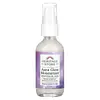What's inside
What's inside
 Key Ingredients
Key Ingredients

 Benefits
Benefits

 Concerns
Concerns

 Ingredients Side-by-side
Ingredients Side-by-side

Water
Skin ConditioningGlycerin
HumectantCaprylic/Capric Triglyceride
MaskingNiacinamide
SmoothingCitrullus Lanatus Fruit Water
Skin ConditioningDecyl Glucoside
CleansingIsopropyl Myristate
EmollientPentylene Glycol
Skin ConditioningGlycol Distearate
EmollientTocopherol
AntioxidantCarbomer
Emulsion StabilisingCoco-Glucoside
CleansingSodium Ascorbyl Phosphate
AntioxidantEthylhexylglycerin
Skin ConditioningCitrus Aurantium Dulcis Peel Oil
MaskingSodium Chloride
MaskingSodium Sulfate
Sodium Hydroxide
BufferingCitric Acid
BufferingPhenoxyethanol
PreservativeSodium Benzoate
MaskingParfum
MaskingLimonene
PerfumingCI 14700
Cosmetic ColorantWater, Glycerin, Caprylic/Capric Triglyceride, Niacinamide, Citrullus Lanatus Fruit Water, Decyl Glucoside, Isopropyl Myristate, Pentylene Glycol, Glycol Distearate, Tocopherol, Carbomer, Coco-Glucoside, Sodium Ascorbyl Phosphate, Ethylhexylglycerin, Citrus Aurantium Dulcis Peel Oil, Sodium Chloride, Sodium Sulfate, Sodium Hydroxide, Citric Acid, Phenoxyethanol, Sodium Benzoate, Parfum, Limonene, CI 14700
Water
Skin ConditioningGlycerin
HumectantSqualane
EmollientHydroxyethyl Acrylate/Sodium Acryloyldimethyl Taurate Copolymer
Emulsion StabilisingPropanediol
SolventBakuchiol
AntimicrobialTropaeolum Majus Flower/Leaf/Stem Extract
Skin ConditioningEvodia Rutaecarpa Fruit Extract
Skin ConditioningQuartz
AbrasiveCitrus Aurantium Dulcis Peel Oil
MaskingCitric Acid
BufferingEthylhexylglycerin
Skin ConditioningCaprylyl Glycol
EmollientPentylene Glycol
Skin ConditioningSodium Stearoyl Glutamate
CleansingTitanium Dioxide
Cosmetic ColorantMica
Cosmetic ColorantWater, Glycerin, Squalane, Hydroxyethyl Acrylate/Sodium Acryloyldimethyl Taurate Copolymer, Propanediol, Bakuchiol, Tropaeolum Majus Flower/Leaf/Stem Extract, Evodia Rutaecarpa Fruit Extract, Quartz, Citrus Aurantium Dulcis Peel Oil, Citric Acid, Ethylhexylglycerin, Caprylyl Glycol, Pentylene Glycol, Sodium Stearoyl Glutamate, Titanium Dioxide, Mica
 Reviews
Reviews

Ingredients Explained
These ingredients are found in both products.
Ingredients higher up in an ingredient list are typically present in a larger amount.
Citric Acid is an alpha hydroxy acid (AHA) naturally found in citrus fruits like oranges, lemons, and limes.
Like other AHAs, citric acid can exfoliate skin by breaking down the bonds that hold dead skin cells together. This helps reveal smoother and brighter skin underneath.
However, this exfoliating effect only happens at high concentrations (20%) which can be hard to find in cosmetic products.
Due to this, citric acid is usually included in small amounts as a pH adjuster. This helps keep products slightly more acidic and compatible with skin's natural pH.
In skincare formulas, citric acid can:
While it can provide some skin benefits, research shows lactic acid and glycolic acid are generally more effective and less irritating exfoliants.
Most citric acid used in skincare today is made by fermenting sugars (usually from molasses). This synthetic version is identical to the natural citrus form but easier to stabilize and use in formulations.
Read more about some other popular AHA's here:
Learn more about Citric AcidCitrus Aurantium Dulcis Peel Oil is oil from the peel of an orange fruit.
Limonene and linalool make up the majority of oils from citrus peels. Limonene has a "citrus" fragrance. Citrus peels also contain flavonoids, which have anti-inflammatory properties.
Citrus peel is also a rich source of flavonoids. Flavonoids are natural antioxidants and help protect your skin against damage. Flavonoids are a group of compounds naturally found in vegetables and fruits.
The term 'fragrance' is not regulated in many countries. In many cases, it is up to the brand to define this term. For instance, many brands choose to label themselves as "fragrance-free" because they are not using synthetic fragrances. However, their products may still contain ingredients such as essential oils that are considered a fragrance.
Learn more about Citrus Aurantium Dulcis Peel OilEthylhexylglycerin (we can't pronounce this either) is commonly used as a preservative and skin softener. It is derived from glyceryl.
You might see Ethylhexylglycerin often paired with other preservatives such as phenoxyethanol. Ethylhexylglycerin has been found to increase the effectiveness of these other preservatives.
Glycerin is already naturally found in your skin. It helps moisturize and protect your skin.
A study from 2016 found glycerin to be more effective as a humectant than AHAs and hyaluronic acid.
As a humectant, it helps the skin stay hydrated by pulling moisture to your skin. The low molecular weight of glycerin allows it to pull moisture into the deeper layers of your skin.
Hydrated skin improves your skin barrier; Your skin barrier helps protect against irritants and bacteria.
Glycerin has also been found to have antimicrobial and antiviral properties. Due to these properties, glycerin is often used in wound and burn treatments.
In cosmetics, glycerin is usually derived from plants such as soybean or palm. However, it can also be sourced from animals, such as tallow or animal fat.
This ingredient is organic, colorless, odorless, and non-toxic.
Glycerin is the name for this ingredient in American English. British English uses Glycerol/Glycerine.
Learn more about GlycerinPentylene glycol is typically used within a product to thicken it. It also adds a smooth, soft, and moisturizing feel to the product. It is naturally found in plants such as sugar beets.
The hydrophilic trait of Pentylene Glycol makes it a humectant. As a humectant, Pentylene Glycol helps draw moisture from the air to your skin. This can help keep your skin hydrated.
This property also makes Pentylene Glycol a great texture enhancer. It can also help thicken or stabilize a product.
Pentylene Glycol also acts as a mild preservative and helps to keep a product microbe-free.
Some people may experience mild eye and skin irritation from Pentylene Glycol. We always recommend speaking with a professional about using this ingredient in your routine.
Pentylene Glycol has a low molecular weight and is part of the 1,2-glycol family.
Learn more about Pentylene GlycolWater. It's the most common cosmetic ingredient of all. You'll usually see it at the top of ingredient lists, meaning that it makes up the largest part of the product.
So why is it so popular? Water most often acts as a solvent - this means that it helps dissolve other ingredients into the formulation.
You'll also recognize water as that liquid we all need to stay alive. If you see this, drink a glass of water. Stay hydrated!
Learn more about Water